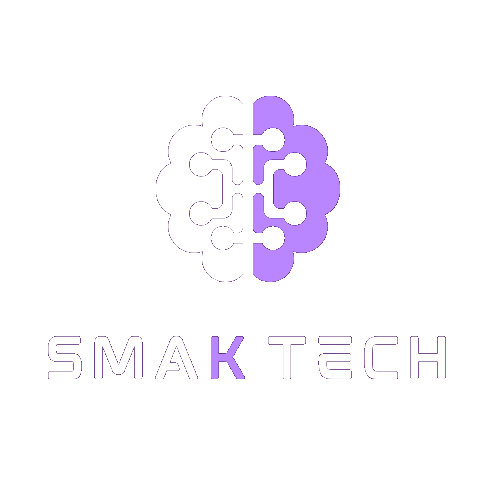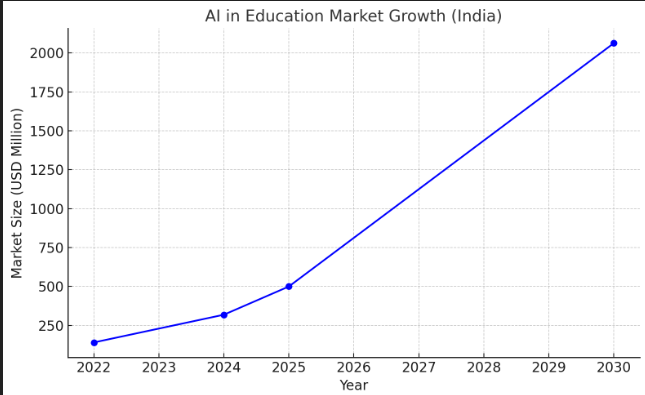Do you know that AI-powered tools are now helping over 5 million underserved children in India learn better, even in offline settings? This is just one example of how artificial intelligence is quietly revolutionizing classrooms around the world. The benefits of AI in education extend far beyond simply boosting scores; they also help uncover why students struggle.
A recent Stanford study showed that Researchers at Stanford University have evaluated large language models’ ability to help middle school math teachers create tiered lessons that allow them to nurture those who might have fallen behind while simultaneously holding the interest of more advanced students.
With AI advancing significantly in this aspect, it represents a solid path towards an equitable learning environment, ultimately leading to a more sustainable future for students. From real-time assessments to natural language feedback, AI tools such as Intelligent Tutoring Systems (ITS) and Natural Language Processing (NLP) are changing classrooms worldwide.
Table of Contents
Togglehow does ed-tech address learning gaps?
Collection of data- The First Step in AI Learning
AI-powered platforms continuously gather data from the assignments, quizzes, clicks, and even video interactions. AI creates the initial digital roadmap of the student’s learning journey by collecting data.
Predictive analysis- spotting Struggles Early
AI identifies the patterns based on repeated mistakes, skipped topics, or lack of engagement. This highlights the type of potential gaps.
Engagement monitoring-Tracking Student Focus
AI helps in tracking click rates, inactivity periods, login frequency, and interaction to assess engagement periods.
Adaptive Assessments-Keeping Students in the Zone
The system ensures that the student stays in their optimal learning zone, challenged but not frustrated. It adjusts AI-powered tests in real time based on how a student is performing. If they are answering correctly, the question gets harder, and if not, they are further simplified.
Speech Recognition -Bridging Accessibility Gaps
This helps young learners and differently abled students by allowing them to speak instead of just writing. Thus, it helps in reducing pronunciation and accessibility gaps in students.
Progress Tracking-Measuring Growth Over Time
AI tracks how students improve over time. AI-generated reports help students and educators identify what works and where support is needed
How ITS and NLPs Deliver the Benefits of AI in Education
If you went through the previous blogs, a lot has been discussed about learning gaps and how it is one major cause of students falling behind. And here comes AI to rescue. Artificial Intelligence offers more than just automation; it brings personalized and real-time learning support into the classroom.
Two of the most impactful AI applications in education today are Intelligent Tutoring Systems (ITS) and Natural Language Processing (NLP). Here’s how they work to close learning gaps and deliver the true benefits of AI in education:
- Real-time diagnosis – An Intelligent tutoring system (ITS) is a computer system that imitates human tutors and aims to provide immediate and customized instruction or feedback to learners, usually without requiring intervention from a human teacher. They assess every step of the student’s journey from the beginning to the end.
- Natural language processing – It is the discipline of building machines that can manipulate human language or data that resembles human language in the way that it is written, spoken, and organized. Moreover, NLPs provide instant writing feedback, simplify reading comprehension, and support accessibility through language translation tools.
Real-Life Case Studies Demonstrating the Advantages of AI in Education
Let’s examine how various AI platforms worldwide are implementing these ideas.
Ferby Chatbot -AI-Powered Learning for All
It is a free, open-source generative AI chatbot developed by Education Above All in collaboration with MIT, Harvard, and UNDP. Ferby Chatbot specifically serves underserved regions and non-English speakers with locally relevant content. Moreover, it offers offline-capable learning resources used by over 5 million children in India.

- Ferby curates content to reflect local culture, languages, and needs, including local content from simple text to interactive project-based lessons.
- The team designed it to work effectively in low-bandwidth settings with limited connectivity.
- It can function offline and even via SMS- based delivery.
- As part of the initiative, Derby helps learners critically engage with AI to identify misinformation ethically using tools.
Mindcraft -Adaptive Learning for Every Student
It is an AI-driven platform that is no less than a boon for students facing geographical and socioeconomic challenges. Mindcraft supports real-time teacher guidance through its smart AI design. It supports real-time teacher guidance, adaptive content, and inclusive learning by community-based resource sharing.
- It has personalized learning paths where a student starts with an initial skill assessment and curates the content modules customized for pace, prior knowledge, and particular style.
- Real Mentorship is made easy for mentors by matching using the profile-based analytics, including career goals and academic strengths.
- Users have access to a shared repository of study notes, materials, and quizzes.
iDream Education- Education for Bharat

It is India’s Local Innovation for Inclusive Learning. Founded in Gurugram, Haryana, to bring intelligent personalized learning to underserved students across India.
- It uses a unified offline, friendly platform with local language content that adapts to each learner’s pace.
- The Haryana government selected iDream Education as one of three providers under the e‑Adhigam tablet project to deliver adaptive content to government school students in classes 10–12.
- It offers curriculum-aligned multilingual digital content containing animated videos, assessments, etc.
Step into the future of education with SmakTech, where insightful teaching and real-time learning data come together to help every student thrive.
What Official Research Says About the Benefits of AI In Education
OECD Report 2024
According to the OECD’s Organisation for Economic Co-operation and Development 2024 digital education outlook, it underscores a clear message- “Although AI holds promise for inclusive learning, it must be implemented with care for issues like data privacy, bias, at the top of their AI education agenda.”
Their digital education outlook 2023 reinforces this, revealing that most governments have opted for guidelines rather than regulation. They have placed privacy, fairness, and local relevance at the top of their policy agendas. According to them, both policy and practice must ensure algorithmic transparency and accountability.
In their work, The Potential Impact of AI on Equity and Inclusion in Education (2024) following points are mentioned:
- AI can advance equity only if it is designed and implemented thoughtfully.
- Digital access gaps, algorithmic bias, and over-dependence on technology are the major concerns.
- AI should augment teachers and not replace them.
Grand View Research
According to Grand View Research, India’s AI in education market was valued at $140.7 million in 2022 and is projected to reach $2.06 billion by 2030. The graph below illustrates this exponential growth trend.
World Bank's workshop
This workshop was conducted on “Leveraging AI to improve student learning”, gathering policymakers, educators, and students from over a dozen countries. The key themes of the workshop were:
- AI as a tool for personalized learning and feedback.
- AI as Story Tutor- A student used AI to convert French Revolution lessons into a storytelling format and dramatically improved retention.
- AI holds potential to help students lagging in literacy, numeracy, and digital skills through adaptive learning tools and personalized support.
- Ethical safeguards and high‑quality data systems are foundational.
- Professional development is important. Teachers need training to integrate AI effectively.
Step into the future of education with SmakTech, where insightful teaching and real-time learning data come together to help every student thrive.
Why AI’s Promise in Education Needs Careful Execution?
These global reports not only highlight the potential of AI to personalize learning and reduce inequity but also emphasize the urgency of responsible implementation. As a well-informed user, one should be well aware of the potential risks associated with AI platforms. At the end, it is all about how thoughtfully we use and implement these tools. Ultimately, the benefits of AI in education go beyond automation; they create a path toward equity, personalized support, and inclusive learning.




